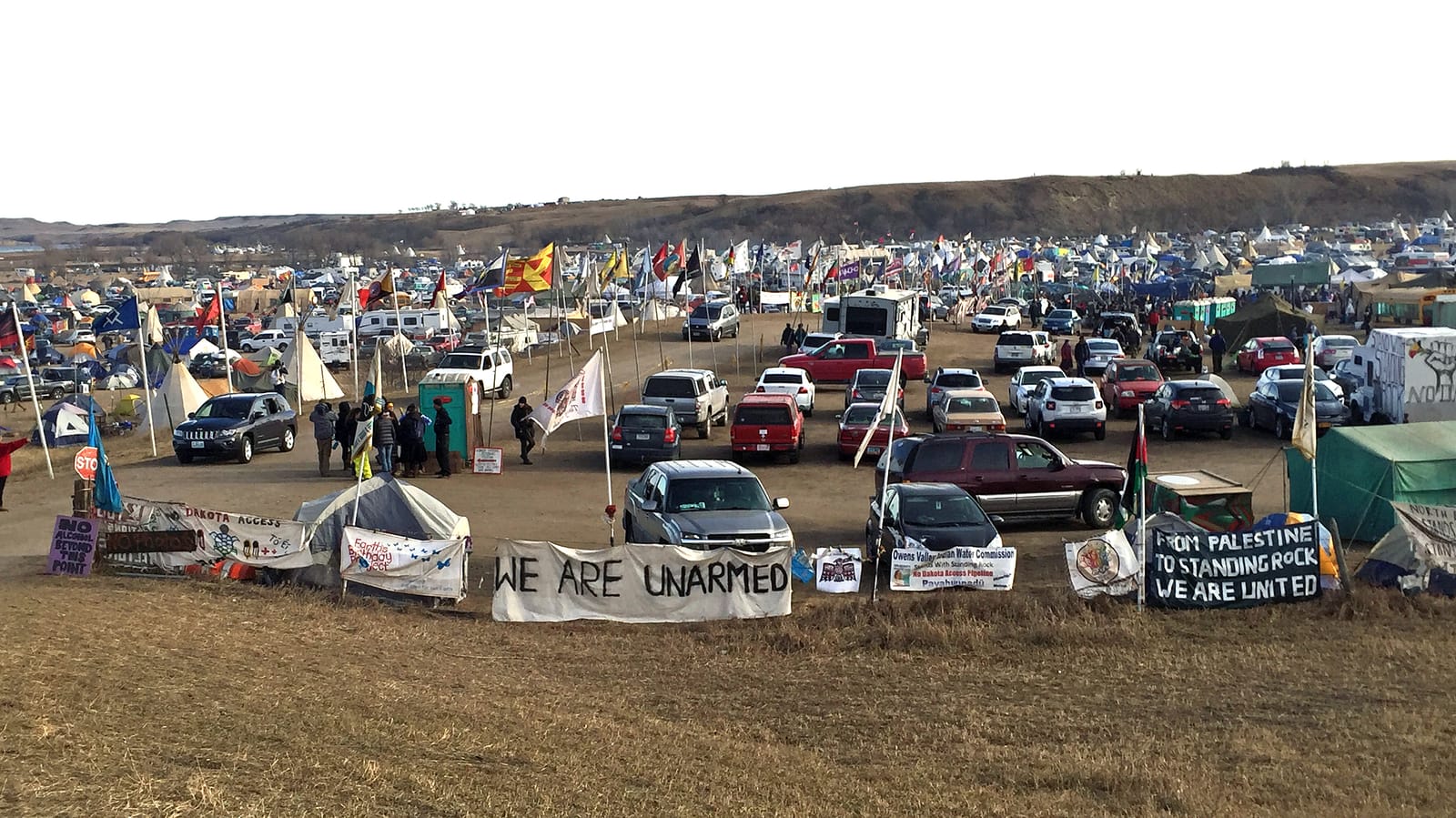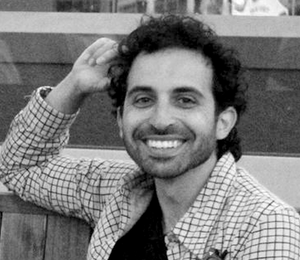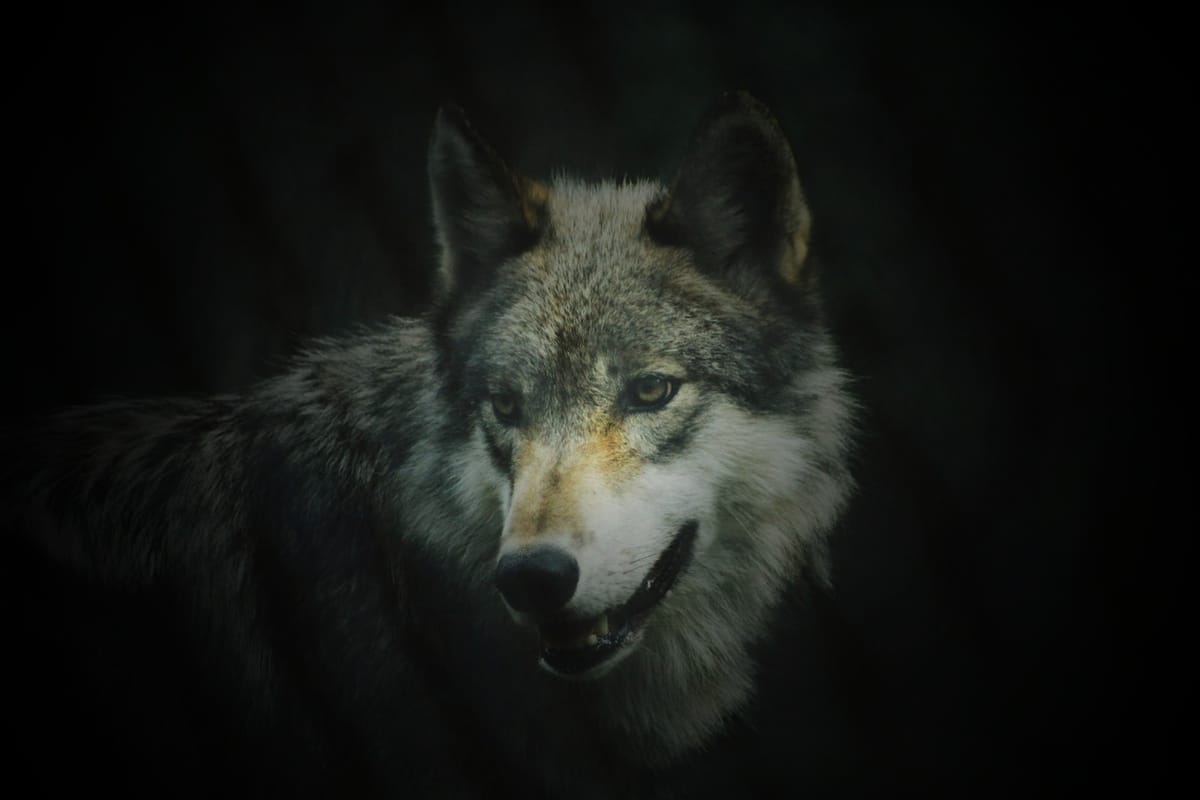In 2016, a company called Energy Transfer was getting ready to build a massive pipeline called the Dakota Access Pipeline, pumping oil from the Bakken region of North Dakota. This pipeline passed within a mile of the Standing Rock Sioux Reservation, underneath Lake Oahe near the reservation, a part of the Missouri River, the tribes’ main drinking water source. There were concerns about culturally significant sacred sites, and concerns about climate change as well. At one point, there had been plans to shift the pipeline closer to the nearby town of Mandan, but that plan was rejected because of townspeoples’ fears about drinking water contamination.
People from the reservation, as well as people from around the world, calling themselves Water Protectors, came to Standing Rock to protest the pipeline’s construction. The fight spilled into court even, with Energy Transfer accusing the environmental group Greenpeace USA of racketeering and other charges.
The venerable podcast Drilled, a true crime podcast about climate change, is in its 12th season. This season investigates the steps that Energy Transfer took to scare up evidence for its lawsuit, intimidate and commit violence against protestors, and the (perhaps not that) surprising involvement of the FBI. Sequencer spoke with Alleen Brown, season 12’s host, to talk about her investigations into the protests and the litany of corporate (and federal) espionage and misinformation aimed against it.
This conversation has been edited for clarity.

Thanks so much for talking with me. To catch up our readers, can you give a bit of a recap beyond what I’m going to write in the intro section above this text?
In 2016, this company called Energy Transfer was getting ready to build this massive pipeline called the Dakota Access Pipeline, pumping oil from the Bakken region of North Dakota.
This pipeline passed within a mile of a reservation, the Standing Rock Sioux Reservation.
It was going to go underneath the Missouri River, the tribes’ main drinking water source. As the pipeline got close to the river, they didn’t have the permit to go under the river but they were building up to it. Encampments started popping up.
On Labor Day 2016, an expert from the tribes found sacred sites in the way of the pipeline, and filed with a court. The next day Energy Transfer shows up with bulldozers, and people nearby try to block the bulldozers. Private security let their dogs go after the protestors.
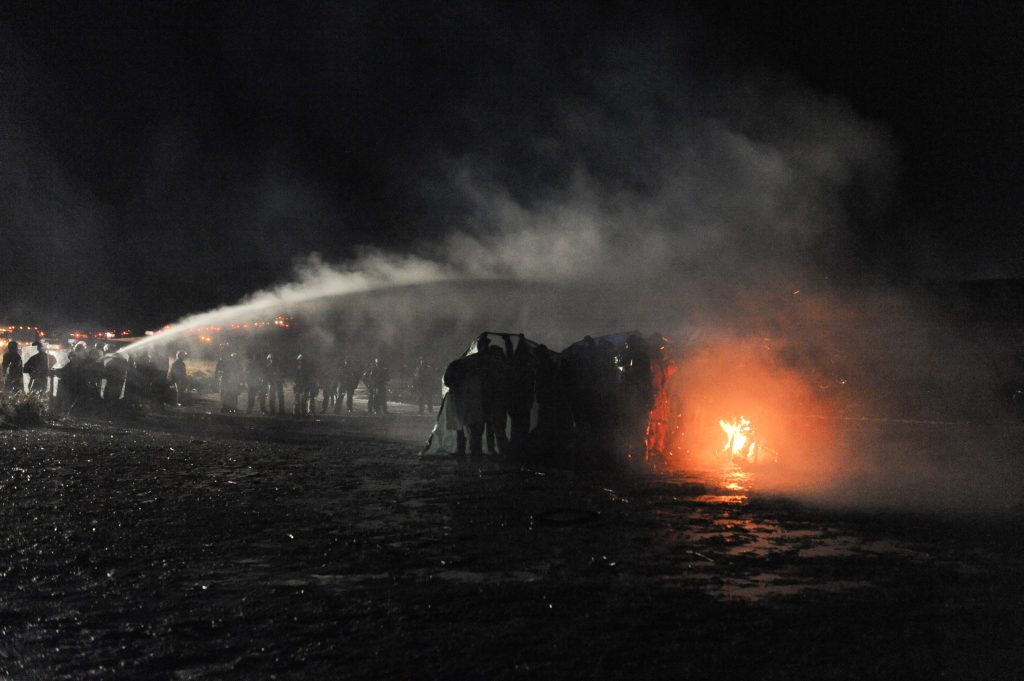
Democracy Now captured footage of this and this really went viral. Now thousands and thousands of people showed up. The most infamous images are of police and dog attacks. At one point police sprayed water hoses at Water Protectors in sub-freezing temperatures. It invoked a lot of memories of the Civil Rights Movement. Those acts of extreme violence led to even more people showing up. Facebook Live had just launched. A lot of people were watching what was happening on social media. It was a wide ranging movement. There wasn’t anyone who was really controlling the situation
You’ve done work for lots of places like The Intercept and Grist. Drilled is now on Season 12 — how did you, and this story, get hooked into the broader Drilled universe?
I started covering Standing Rock-related stories when I was at The Intercept in 2016. That happened as I really started to dig into the tactics that the pipeline company was using to quash the resistance against their pipeline.
Somebody who had worked for the private security contractor that the pipeline company hired leaked us a bunch of documents, these daily internal situation reports, laying out what they viewed was happening inside these anti-pipeline camps and within the broader movement, and they also happened to reveal what the private security company was doing, including infiltrating protest spaces, using aerial surveillance, listening in on radios, working really closely with law enforcement.
That leak was in 2017, now that's like eight years ago, but I've kind of kept pulling at threads since then, and filed this big records request at one point and ended up with a whole lot more records about what TigerSwan was doing. TigerSwan is the private security company.
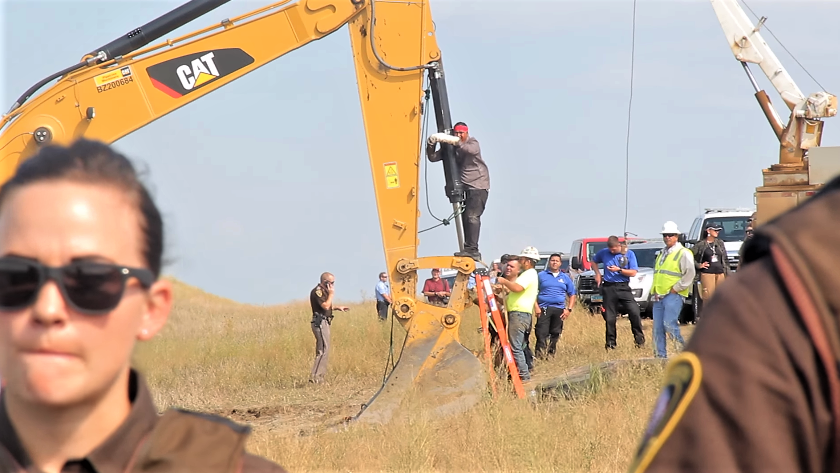
T, I, G, E, R, S, W, A, N? TigerSwan?
Yes, TigerSwan. Their logo used to be a tiger and a swan, kind of made into a yin yang. I don't think they're using that anymore, unfortunately. But, yeah, they came out of the private security boom during the war on terror. You could think of them as like a cousin to Blackwater in some ways.
And as the War on Terror was winding down and contracts weren't so available in Iraq and Afghanistan, they were looking for their next big thing. And there was this domestic situation that they were hired to respond to, and they really brought home their War on Terror tactics. They viewed what they were doing there as counterinsurgency work, and acted accordingly.
I had been focusing a lot of attention on what that security company was doing, and I'm still going through these, like thousands and thousands of pages of internal records, which are pretty astounding. They have plans for infiltration, all these wild things. And as I was doing that… actually, this is a longer story than you want, probably.
Not at all, longer is better than shorter.
Last year, 2024, I was loosely following a lawsuit where the state of North Dakota sued the federal government and wanted them to pay them back for emergency response costs related to the Standing Rock protests. Policing, clean up costs, things like that. They were like, “We shouldn't have to pay for this because the Army Corps of Engineers allowed these anti-pipeline encampments to remain on their land.”
All these really juicy documents came out of that suit. One of the depositions that became public showed that the FBI had up to 10 informants inside the camps. I called up the FBI and an agent told me that they were just going in plainclothes into the camps every day.
Okay, and how did that North Dakota suit morph into this Greenpeace thing?
I knew that the Greenpeace lawsuit, which was filed in 2017 so it had been dragging on for a long time, would go to trial in the summer. If this, sorry, seemingly boring suit had all these interesting things come out of it, I should pay more attention to it.
I was kind of approaching it in this nerdy investigative journalist type way, where I'm like “what kind of documents are we gonna find?” But, fast forward to March 2025, when I was actually in North Dakota, covering the trial, I was really astounded by what I saw in the courtroom, and we actually had Drilled rethink our approach to this podcast series, and focused a lot more heavily on exactly what went down in the courtroom than we originally thought we would.
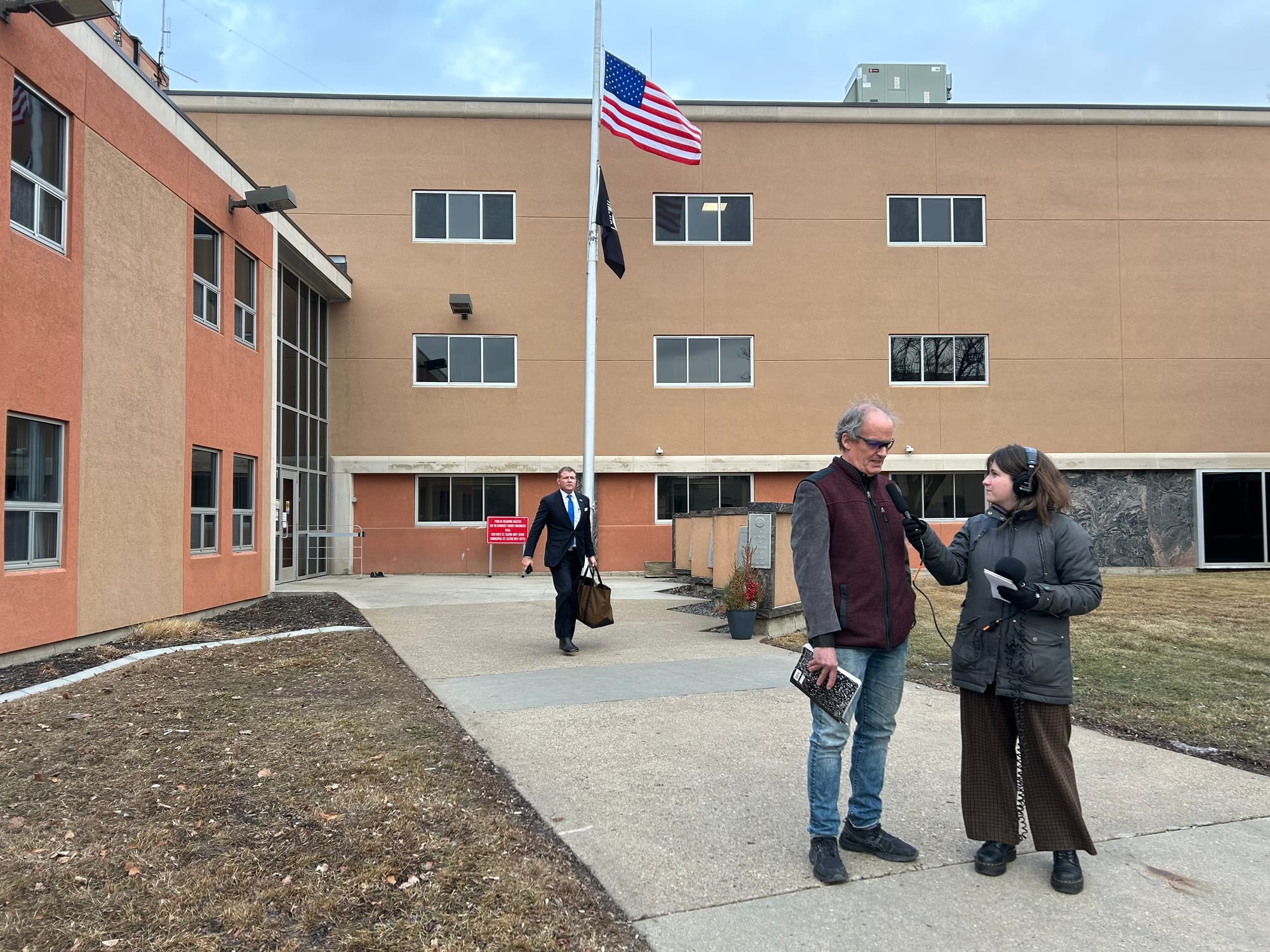
That’s a very good segue. Would you like to spoil the rest of the podcast for us? Or as spoil it as much as you’d like.
I was maybe a little pollyanna about the whole thing. I knew Greenpeace had done some studies of the jury pool, the community of people the court was drawing from to decide this case. It was clear from this research that it was going to be very unfavorable to Greenpeace.
After doing all this research, all the resources that TigerSwan and Energy Transfer had used to sway Bismarck and Mandan [Ed: two neighboring cities, the latter where the Greenpeace trial took place]. A lot of people there were employed by the energy companies.
I’m from Saint Paul, the other Twin Cities, and after George Floyd I was able to see how bigger cities responded to a big disruptive social movement. Here I could see it play out in a much smaller city. There’s no direct flight from New York. There aren’t many outsiders hanging out.
It was disruptive to people’s lives — they hated it, they really hated it. So between all this propaganda aimed at them and their lived experiences, law enforcement ends up with a very particular point-of-view, and they ended up in the middle of all of this. A lot of those cops came from Mandan, and a lot of people are aligned with law enforcement there.
There are a lot of reasons that locals don’t like protestors; they were very poised to rule against GreenPeace. If we were all in the same room and saw the same evidence I thought that the only way Greenpeace would lose was if Energy Transfer found something on Greenpeace. I kept waiting for a smoking gun but it never came.
They certainly showed that Greenpeace was supporting this Indigenous group that was doing nonviolent direct action and that Greenpeace gave a little money to, but I never saw any evidence that GP was orchestrating any actions. The amount of money they were putting into supporting the Standing Rock movement is small. I’ve been following the Standing Rock movement for years, there were lots of nonprofits involved, millions pouring into GoFundMes.
The total that Energy Transfer found on Greenpeace was $55,000, and a foundation raises that the Greenpeace director did added about 90,000. So not nothing, but $8M was going into those GoFundMes. 7/11 of the jury and alternatives had energy industry ties, and most of the jury pool expressed negative feelings towards the protestors.
Is there anything else you’d like to spoil for Sequencer readers?
In the first episode we follow a guy named Cody Hall, who’d been named in the lawsuit for seven years. Cody’s from the Cheyenne River Sioux reservation, a lot of people there are related to the people in the encampments. He served as a spokesperson for the Red Warrior Camp, which is a little more radical than some other groups. There were accusations that Red Warrior Camp was a front for GP, which is wild.
Cody had this lawsuit hanging over his head for years. He wasn’t even a leader, just a spokesperson. At the trial he never gets served, he’s ultimately quietly dropped from the case. Up until the week before the trial he had no idea what was going to happen. It was a signal to the wider community that they should be scared, they should be scared to talk about this thing, that something like this could happen to them.
A lot of attention has been paid to conspiracy theories around what Greenpeace was doing on the ground but less so to these allegedly defamatory statements and accusations. A lot of people feel like this lawsuit was a sideways attack at the Standing Rock Sioux Tribe and meant to undermine indigenous sovereignty in a lot of ways.

These are two statements that the Sioux tribe particularly stands behind. Energy Transfer said it was defamation for Greenpeace to say that Energy Transfer deliberately destroyed sacred sites, and defamatory to say that the pipeline passes through tribal lands. The company was attempting to create this legal decision to say that this was false.
The jury agreed with Energy Transfer on most of their claims, Including that it was defamatory, the statements related to tribal land were defamatory.
Not ahistorical or illegal, but defamatory?
Yeah. For it to be defamatory it has to be a lie, a lie told with malice.
Are there any through-lines through all these seasons? Something that unites all of them?
When Amy started this podcast, she thought of it as a true crime podcast about the fossil fuel industry, and this season is a courtroom drama.
I think a lot of past seasons have looked a lot at misinformation and disinformation and this season does too. This lawsuit looked to get damages from Greenpeace, but it was also trying to tell the story of Standing Rock. I saw people take up the narrative in Mandan that Greenpeace was “doing” Standing Rock. This season really explores another angle of fossil fuel misinformation.
Is the fossil fuel industry reliant on misinformation? Why?
If they just focused on the facts, their existential crisis would become real. The only way they can maximize profits is if they can make the climate crisis not true.
This is something that goes beyond the fossil fuel industry. As we see this energy industry transfer moving in fits and starts, towards transitional minerals and different kinds of energy, the people trying to extract those minerals have to face the people who live near those minerals, who might not want those disruptions.
Extractive industries beyond the fossil fuels industries always have this problem of having to convince the local community that this is the best thing for them. Sometimes this means sharing just the facts, sometimes this involves undermining the reality of people who have lived there for a long time.
Is there any hope that the pipeline can still be stopped?
In the community of Indigenous protestors and other Water Protectors, there’s awareness that these are very long haul fights. Right now with Trump in office I’d be surprised if the Army Corps doesn’t grant the easement. With Trump in office it doesn’t look good for this round.
Alleen Brown is an independent investigative journalist. Her reporting on state and corporate repression of Indigenous-led Dakota Access Pipeline opponents at Standing Rock has been cited in civil rights cases, reports submitted to international human rights bodies, and more than a dozen books. Her investigation mapping over 6,500 prisons against heat, wildfire, and flood risk has provided foundational information for organizers and policymakers defining what climate change will mean for mass incarceration. She has reported extensively on the intersections between environmental crises and racism, poverty, immigration, violence against women, and criminalization. She was previously a staff reporter at The Intercept and has written for Grist, The Guardian, Inside Climate News, The Appeal and other publications. Alleen is from St. Paul, Minnesota, and lives in New York.


